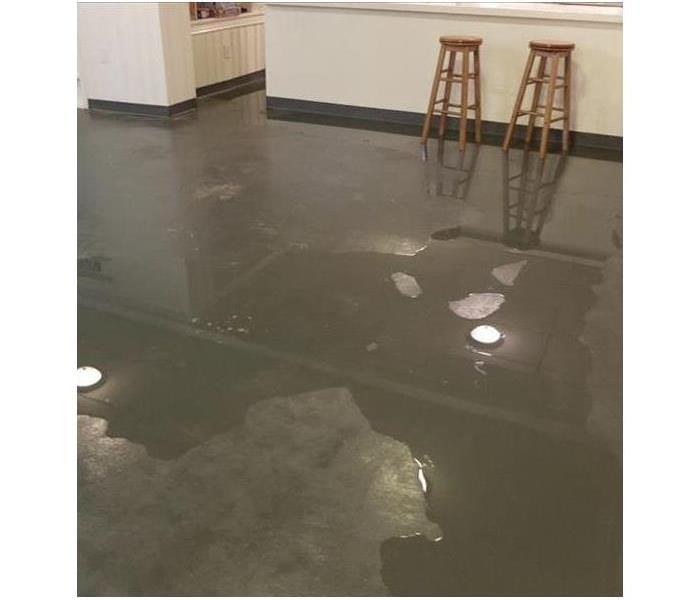Some Causes of Basement Flooding and How to Determine
7/26/2019 (Permalink)
Basements can have a tendency to flood. Here are some ways to help prevent your basement from flooding and also tips to help determine the cause.
When you have a flooding problem in your basement you want to determine where it can be coming from, and the cause. Start first at the eaves troughs and downspouts, and then look at your landscaping and foundation drainage. You want to make sure everything is moving water away from your home and not gathering it into puddles or keeping it near the house. Next move on to check your sewer/sanitary drains and then finally check the interior plumbing. Take a look at your water heater.
- Always keep the gutters and downspouts around your home clean of debris, check for cracks (especially at the connections). Have the downspouts out 6’ from your foundation. If they still spill over in heavy rains replace them with a larger size. Check often to ensure water is moving away from your house.
- The ground around your home settles. When this happens it’ll slope towards your foundation. Fill it in and grade the lot so it slopes away from the house at least 6’. That’ll help prevent water from pooling in puddles around your home.
- It’s not easy to determine whether or not you have weeping tile problems, but if the source of the water can’t be found it’s probably time to hire a company with a camera to snake the drains and see if you have a crushed tile or plug. This would also determine if this is in the sanitary or storm drain. (Usually if water or sewer is coming up through your drains in the floor or through a basement shower drain this is external backup).
- Monitor, clean and maintain your Sump Pump. Make sure the discharge pipe is free of debris and discharged out into your property where it can be absorbed, such as your lawn or garden. Next, make sure the pit is cleaned each year as the weeping tiles can carry small amounts of sand or debris into the pit. Check and test your pump each and every spring (can check yourself by pouring water into the pit until the pump kicks on). Make it a point to remove and clean the pump once a year. Always disconnect the power source before you begin working on the pump to protect your safety. Check once a month for debris in the pit. A good back up for your sump pump is a battery backup that will kick on in case you should lose power from a storm. There are a variety of backups to choose from. Some even have an audible alarm or can call your phone to notify you of a power outage. There is also a backwater valve that prevents sewage from backing up into your basement, ask a plumbing company for more information about it.
- Look at your water heater for any cracks or leaks.
If your basement does experience flooding then call us at SERVPRO of Burlington at 336-379-1772. We are available 24/7 and 365 days a year to assist you with water damage in your home.






 24/7 Emergency Service
24/7 Emergency Service
